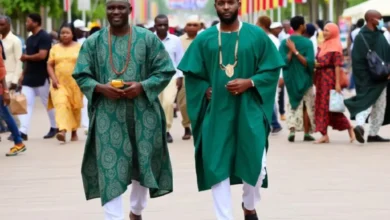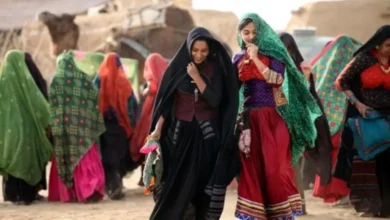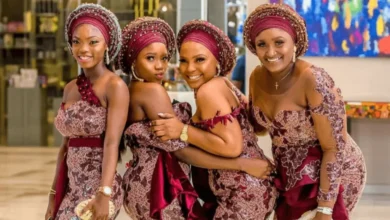The Bisht: A Deep Dive into History, Culture, and Style
A Definition and Overview
The bisht (بشّت) is a traditional long, loose-fitting outer robe predominantly worn in the Arabian Peninsula, parts of North Africa, and some regions of the Levant. While its precise origins remain shrouded in the mists of time, its enduring presence across diverse cultures speaks volumes about its versatility and cultural significance.
More than simply a garment, the bisht represents status, tradition, and a connection to a rich tapestry of heritage. It’s characterized by its typically dark, luxurious fabrics and often intricate detailing, showcasing the wearer’s social standing and personal taste.
Historical Context: Tracing the Bisht’s Roots
Pinpointing the exact origins of the bisht proves challenging. Historical accounts and archaeological evidence suggest its antecedents trace back centuries, possibly even millennia. Early forms likely served practical purposes, offering protection from the harsh desert climate – the sun’s intense rays, sandstorms, and fluctuating temperatures.
Over time, the bisht evolved from a purely functional garment to a symbol of prestige and power. Its adoption by ruling classes and prominent figures solidified its role as a marker of social status, reflecting cultural values and societal hierarchies. Variations in design and materials across different regions subtly revealed regional identities and cultural affiliations, underscoring its importance as a piece of cultural identity.
See also Central Asian Clothing: Traditional Garments & Modern Styles
Central Asian Clothing: Traditional Garments & Modern Styles
Regional Variations: A Tapestry of Styles
While the bisht maintains a recognizable silhouette across its range, significant regional variations exist. The materials used, the level of ornamentation, the length, and even the cut can vary considerably. For instance, bisht from the Arabian Peninsula often feature opulent materials like cashmere or camel hair, embroidered with intricate gold or silver threading.
These are often associated with ceremonial wear and represent high status. In other regions, more accessible materials like wool or cotton are used, reflecting the differences in climate and economic conditions. Color also plays a role, with deep blacks, browns, and even beige shades representing different traditions and preferences.



The Materials: From Humble Beginnings to Luxurious Creations
The materials employed in bisht construction have evolved over time, reflecting both technological advancements and changing cultural values. Originally crafted from readily available materials like wool and cotton, the bisht’s fabrics gradually became more refined.
The introduction of high-quality cashmere and camel hair elevated its status, becoming associated with luxury and opulence. The choice of material often signified the wearer’s wealth and position in society. The finest bisht were (and continue to be) painstakingly handcrafted, showcasing the skill and artistry of the weavers and embroiderers.
See also Fouta Towels: The Ultimate Guide to Size, Material & Uses
Fouta Towels: The Ultimate Guide to Size, Material & Uses
The luxurious feel and drape of the fabric, combined with the intricate details, contributed to the bisht’s prestigious reputation.
Embroidery and Ornamentation: Storytelling Through Stitches
Embroidery plays a pivotal role in enhancing the bisht’s aesthetic appeal and cultural significance. The intricate patterns, often employing gold or silver threads, add layers of meaning and beauty. These designs are not merely decorative; they often carry symbolic weight, reflecting cultural beliefs, historical events, or tribal affiliations.
The skill and precision involved in creating these elaborate embroideries underscore their value and the high regard given to artisan craftsmanship. The motifs found in bisht embroidery can vary greatly across regions and reflect the unique heritage of the particular community or tribe.
The Bisht in Modern Times: Evolution and Adaptation
Despite its rich history, the bisht continues to hold relevance in modern times. While its primary association remains with traditional occasions, it has evolved to adapt to contemporary styles and preferences.
While many retain traditional designs and materials, some designers explore modern interpretations, incorporating innovative techniques and fusing traditional elements with modern aesthetics. This adaptation reflects the bisht’s versatility and capacity to remain a significant symbol of cultural identity in an evolving world.
The bisht’s presence at high-profile events, including international ceremonies, signifies its enduring global appeal.
The Bisht and Social Status: A Symbol of Power and Prestige

Throughout history, the bisht’s association with power and prestige has been undeniable. The finest examples, crafted from the most luxurious materials and adorned with elaborate embroidery, were reserved for royalty, high-ranking officials, and influential figures.
The bisht served as a visual marker of one’s social standing and a testament to wealth and status. The act of donning the bisht signaled authority and conveyed a profound sense of dignity and respect. Even today, the bisht’s presence at formal occasions underscores its continued importance in signifying status and leadership.
Cultural Significance: Beyond Fashion, a Symbol of Identity
The bisht transcends its role as merely a garment; it embodies a deep-rooted cultural significance. It serves as a symbol of national pride and cultural heritage, representing the unique identity of the communities where it’s worn.
Its presence in important ceremonies, social gatherings, and celebrations reinforces its cultural value. The bisht’s ability to transcend generational boundaries speaks to its enduring power and its ability to connect people to their past while navigating the complexities of the present.
The Bisht in Contemporary Culture: A Continuing Legacy

The bisht’s enduring popularity is undeniable, even in the context of globalization and the influx of Western fashion trends. Its presence in contemporary society is a testament to its enduring appeal and its ability to remain relevant.
Its inclusion in high-profile events, such as the FIFA World Cup 2022, where it was famously worn by Lionel Messi, brought international attention to its elegance and cultural significance. This underscores its capacity for transcending cultural boundaries and becoming a symbol of both tradition and modern style.
Caring for Your Bisht: Preserving a Legacy
Owning a bisht is acquiring a piece of history and tradition. Proper care is crucial to preserving its beauty and integrity for generations to come. Depending on the material (cashmere, wool, silk, etc.), specific care instructions are essential.
Generally, dry cleaning is recommended to avoid damage to delicate fabrics and embroidery. Proper storage, away from direct sunlight and moisture, will also contribute to its longevity. This demonstrates respect not only for the garment itself, but for the cultural heritage it represents.



